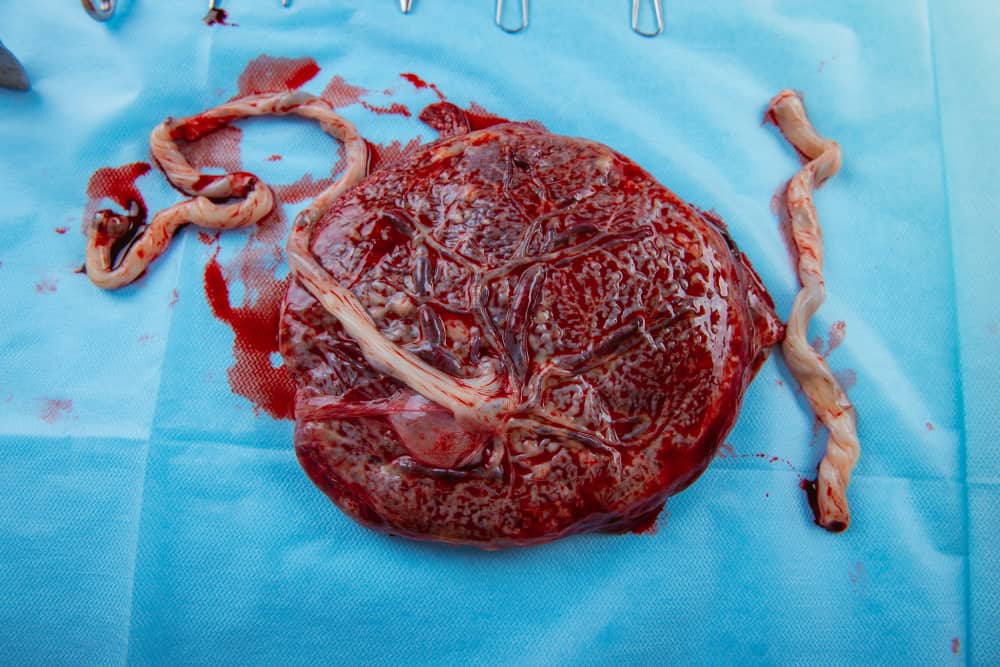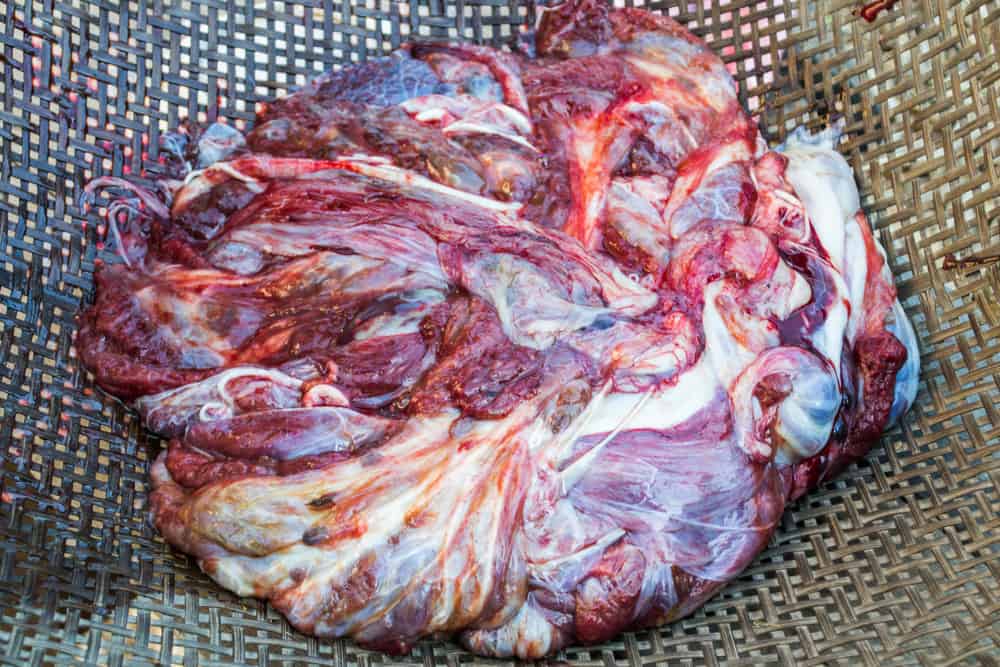Placentas have the same basic properties across species, but they differ all the way down to microscopic levels. For instance, you can tell the difference between a bovine placenta and a human or canine placenta.
Placenta Meaning
The placenta is a vascular organ inside most mammals that fuses the fetus to the mother’s uterus. It begins as a temporary embryonic and later becomes a fetal organ crucial in exchanging nutrients, gas, and waste. It is also an endocrine organ that produces vital hormones for the mother and baby. The fetus is connected to the placenta via an umbilical cord. Placentas are found in humans, placental mammals, marsupials, and some non-mammals.
The word “placenta” is Latin for “ type of cake” and Greek for “flat, slab-like.”

The placenta is a vascular organ inside most mammals that fuses the fetus to the mother’s uterus. Human placenta (pictured above).
©nata-lunata/Shutterstock.com
Placenta Pronunciation
Placenta is pronounced |Pluh| – |Sen| – |Tuh|.
Placenta Plural
The plural for placenta is placentas or placentae.
What Animals Have Placentas?
All mammals, except the platypus and echidnas, have placentas. There are over 3,000 species of placental mammals, and they are an exceptionally diverse group with many body forms and social structures.
Examples of placental mammals include:
- Ungulates
- Carnivores
- Primates
- Terrestrial insectivores
- Edentates
- Rodents
- Bats
- Seals
- Whales
- Manatees
Placentas are also found in marsupials and some non-mammals, like squamate reptiles and some fish.

The placenta facilitates the transfer of nutrients and gas exchange. The mother transfers nutrients and oxygen to the fetus and the fetus passes back waste products and carbon dioxide. Cow placenta (pictured above).
©suradech123yim/Shutterstock.com
Placenta Evolution
The mammalian placenta evolved over 100 million years ago and began the extreme diversification of placental mammals. More modern placental members originated during the Paleogene period, between 40 and 60 million years ago. Placentas have the same basic properties across species, but they differ all the way down to microscopic levels. For instance, you can tell the difference between a bovine placenta and a human or canine placenta.
Placenta Structure
Placental mammals have a chorioallantoic placenta, forming from the outermost fetal membrane (chorion) and the allantois, a hollow sac-like structure filled with clear fluid. The placenta’s weight and length vary by species and is typically a dark red and blue color. The umbilical varies too and connects to the chorionic vessels, which branch out over the placenta and form a villous tree structure covered by a layer of cells. The structures group into cotyledons, which transmit fetal blood and exchange oxygen and nutrients.
Placenta Functions
The placenta facilitates the transfer of nutrients and gas exchange. The mother transfers nutrients and oxygen to the fetus and the fetus passes back waste products and carbon dioxide. The fetus excretes urea, uric acid, and creatinine and is transferred to the mother’s blood through the placenta by a diffusion process.
The placenta also functions as a barrier between mother and fetal cells. The barrier prevents the mother’s blood, bacteria, viruses, and proteins from crossing over to the baby. However, a small number of diseases and viruses can still be passed from the mother to the child.
The placenta’s purpose is to keep the fetus healthy and includes releasing hormones that facilitate a viable pregnancy and delivery.



